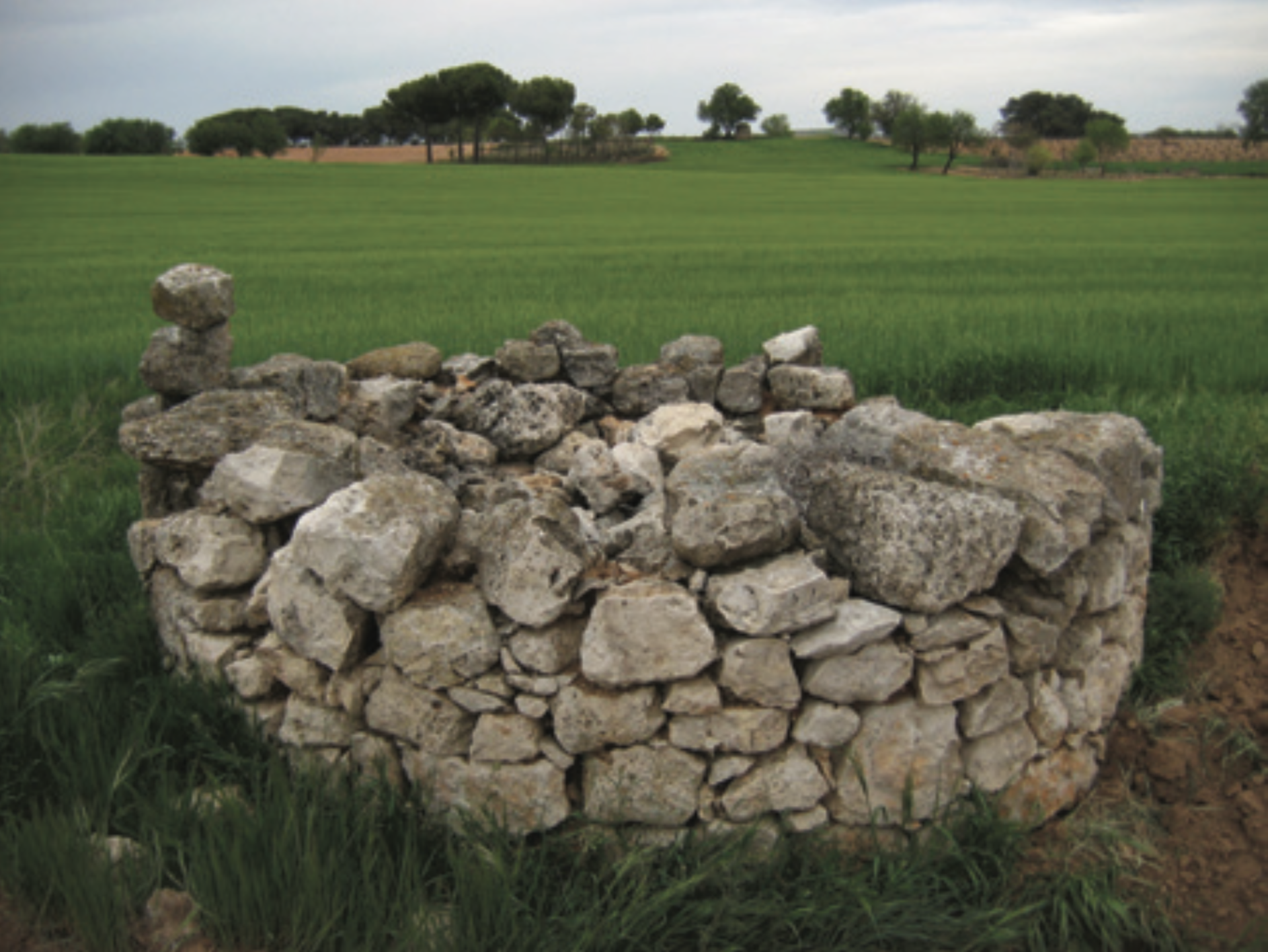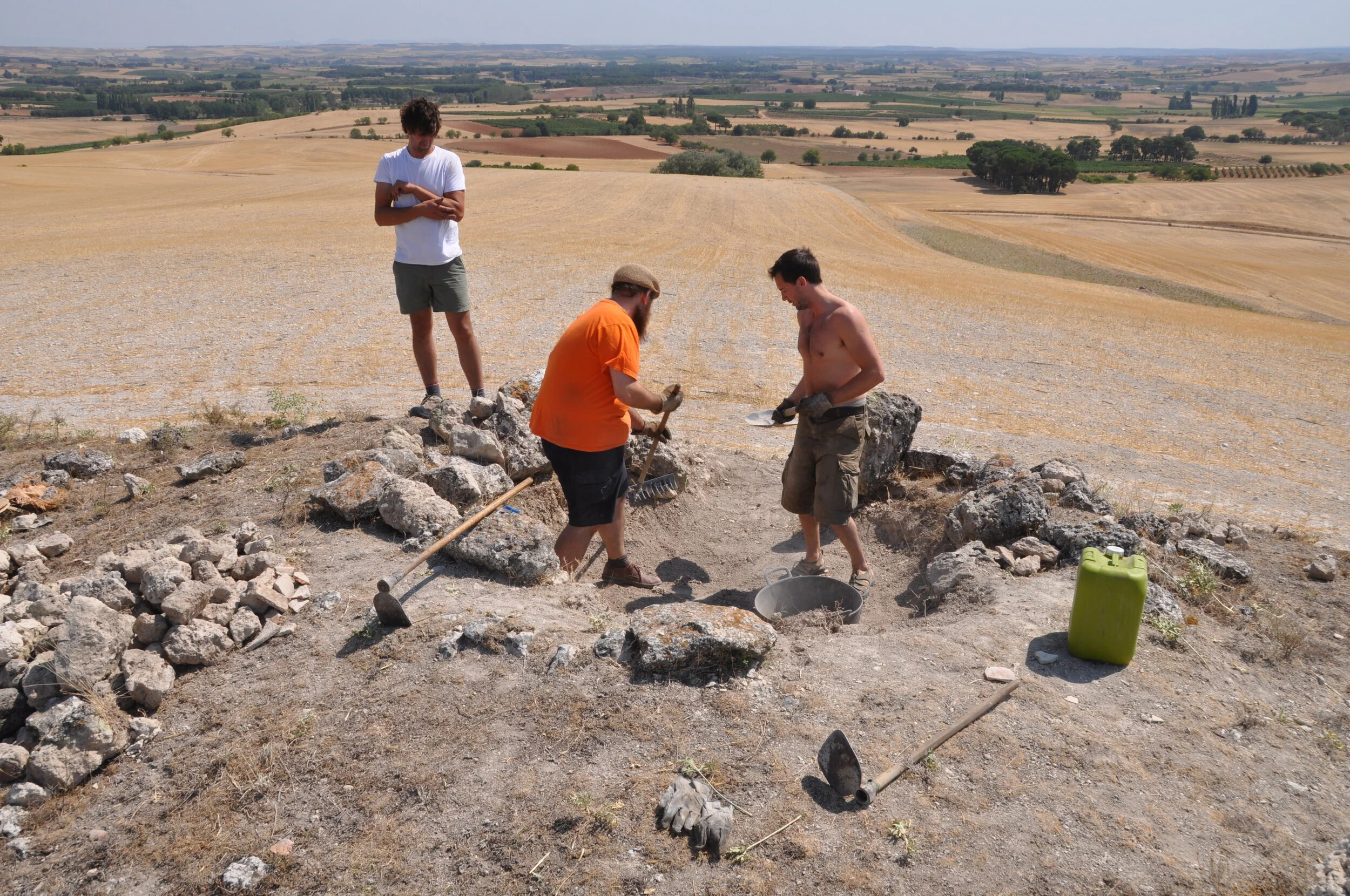
UNTITLED 1 (Chozos de Pastor)
Sin Titulo 01 (Chozos de Pastor) [Untitled 01, (Shepherd’s Huts)] is an art project combining primitive, playful and social aspects in a kind of magical space exploring the contemporary rural landscape.
The work consists in the reconstruction of an old shepherd’s hut and its subsequent transformation into an observatory, based on the principles and mechanism of the camera obscura.
Known locally as “chozos de pastor”, these huts were built in the countryside by peasants, hunters and shepherds to take refuge from adverse weather conditions. The constructions do not have an owner as such but belong to the community and can be used by whoever needs them. They are usually to be found in agricultural and sheep farming land, normally next to or near common pathways. With the arrival of motorized vehicles and the changes in transhumance practices, these huts fell into disuse and currently the vast majority lie in ruins.
With the assistance of the local people from the village of Guzmán (Burgos), we rebuilt a hut that stood in the area known as El Pendoncillo, using the original foundations and local material (limestone) and respecting the traditional architecture with a round floorplan and a vaulted roof. An 18 mm diameter hole was pierced in a metal door added to the hut, through which a single shaft of light entered the construction.




“the most important constitutive function of new art practices is to create mechanisms in which history can be made”
— Felix Guattari
When you enter the hut, close the door and pull back the cover from the hole, the image of the outside landscape is projected onto the opposite wall, upside down. As such, the image cast by this “camera” is not a still image but a living, continuously moving image truthfully reflecting whatever is happening outside the hut. If there were a group of people outside dancing, this is what we would see inside and if it is raining outside, we would also see the rain fall in real time inside.
“For me, photographs of landscape (urban or country) must be habitable, not visitable.”
— Roland Barthes
This quality of being able to see “in real time” helps us to counteract the nostalgia with which we usually look at the countryside and rural life, practically always from the optic of a more or less glorious past. Regardless of what is going on, the image that the hut returns to us is always faithful to the present, showing a more honest identity in continuous change, similarly to the rural world itself.
This work proposes a new form of interrelating with the territory. Before the so-called “Green Revolution”, when most farming chores were done by hand, the countryside was an inhabited space. Now, after the assimilation of technological changes in this century, the majority of life takes place in urban centers, in the streets of towns and cities.
The idea behind this project is to broaden the space of the inhabitable within the landscape. The hut acts as a kind of “bait” to bring people out of their towns and villages and foster the use of farming land as an inhabited, useful and social space.








